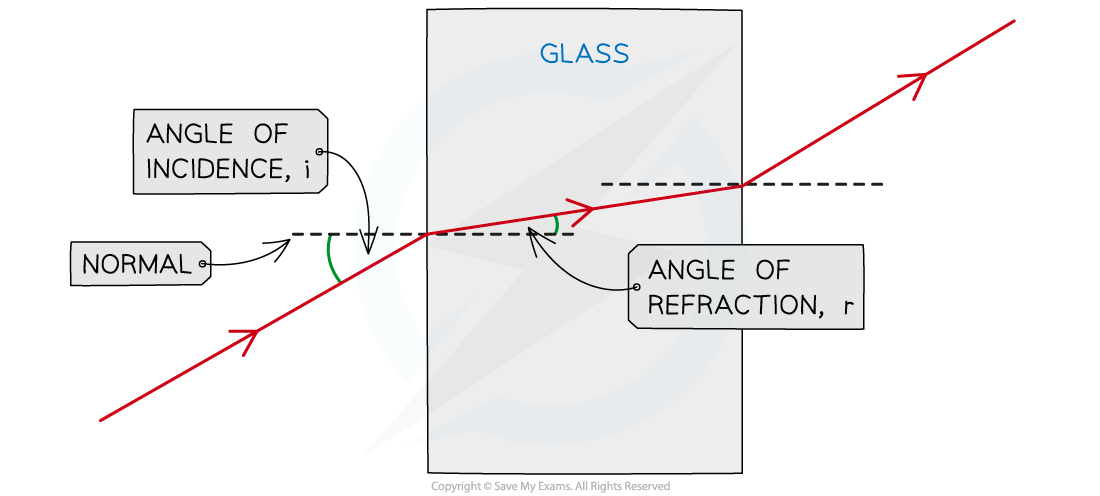Snell's Law (Cambridge (CIE) O Level Physics): Revision Note
Exam code: 5054
Did this video help you?
Refractive Index & Snell's Law
Refractive Index
The refractive index is a number which is related to the speed of light in the material (which is always less than the speed of light in a vacuum):
The refractive index is a number that is always larger than 1 and is different for different materials
Objects which are more optically dense have a higher refractive index, eg. n is about 2.4 for diamond
Objects which are less optically dense have a lower refractive index, eg. n is about 1.5 for glass
Since refractive index is a ratio, it has no units
Snell's Law
When light enters a denser medium (such as glass) it slows down and bends towards the normal
How much the light bends depends on the density of the material

Angle of incidence i and angle of refraction r through a glass block
If light travels from a less dense to a more dense medium (e.g. air to glass), r < i (bends towards the normal)
If light travels from a more dense to a less dense medium (e.g. glass to air), r > i (bends away from the normal)
The angles of incidence and refraction are related by an equation known as Snell's Law:
Where:
n = the refractive index of the material
i = angle of incidence of the light (°)
r = angle of refraction of the light (°)
'Sin' is the trigonometric function 'sine' which is on a scientific calculator
Worked Example
A ray of light enters a glass block of refractive index 1.53 making an angle of 15° with the normal before entering the block.
Calculate the angle it makes with the normal after it enters the glass block.
Answer:
Step 1: List the known quantities
Refractive index of glass, n = 1.53
Angle of incidence, i = 15°
Step 2: Write the equation for Snell's Law
Step 3: Rearrange the equation and calculate sin (r)
Step 4: Find the angle of refraction (r) by using the inverse sin function
r = sin–1 (0.1692) = 9.7 = 10°
Examiner Tips and Tricks
Important: (sin i / sin r) is not the same as (i / r). Incorrectly cancelling the sin terms is a very common mistake!
When calculating the value of i or r start by calculating the value of sin i or sin r.
You can then use the inverse sin function (sin–1 on most calculators by pressing 'shift' then 'sine') to find the angle.
One way to remember which way around i and r are in the fraction is remembering that 'i' comes before 'r' in the alphabet, and therefore is on the top of the fraction (whilst r is on the bottom).
Additionally, make sure your calculator is in degrees mode, not radians mode, when you are given i and r in degrees.

Unlock more, it's free!
Did this page help you?